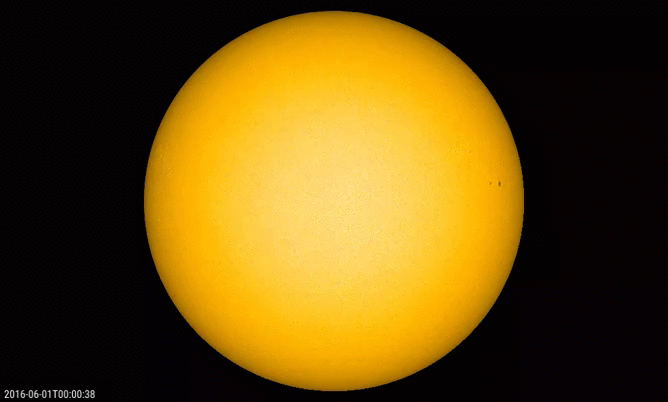The already very low solar activity of the last few months ended into a downright traumatic experience for the solar observers when, starting on 3 June, the Sun became totally devoid of its so familiar speckles. Indeed, from 3 till 7 June, no sunspots were observed, and the daily estimated sunspot number was at comatose levels (flat "0") for 5 consecutive days. The gif underneath shows SDO/HMI imagery of the solar disk from 1 till 8 June. The group that disappears behind the west limb is NOAA 2551, and the one that is visible on 8 June is NOAA 2552.

Together with an isolated spotless day on 17 July 2014 (see the related news item), these were the first spotless days since the most recent solar cycle maximum early 2014. They are ominous signs that the current cycle is in its declining phase, and that we are gradually approaching the next solar cycle minimum. That minimum is expected around 2020, but it is still to early to make any prognosis or comparison with the previous very deep minimum in 2008-2009 (see this 2009 news item). Also, brief periods with strong solar activity remain possible for certainly the next 2 years. Indeed, prior to the previous minimum in December 2008, many X-class flares were recorded in January 2005, September 2005 and December 2006.



 |
 |





